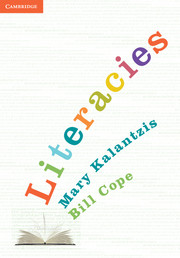Book contents
- Frontmatter
- Contents
- Acknowledgements
- Introduction The work of learning and teaching literacies
- Part A The ‘Why’ of Literacies
- Part B Approaches to Literacies
- Part C The ‘What’ of Literacies
- Part D The ‘How’ of Literacies
- Chapter 12 Literacies to think and to learn
- Chapter 13 Literacies pedagogy
- Chapter 14 Literacies and learner differences
- Chapter 15 Literacies standards and assessment
- References
- Index
Chapter 14 - Literacies and learner differences
from Part D - The ‘How’ of Literacies
- Frontmatter
- Contents
- Acknowledgements
- Introduction The work of learning and teaching literacies
- Part A The ‘Why’ of Literacies
- Part B Approaches to Literacies
- Part C The ‘What’ of Literacies
- Part D The ‘How’ of Literacies
- Chapter 12 Literacies to think and to learn
- Chapter 13 Literacies pedagogy
- Chapter 14 Literacies and learner differences
- Chapter 15 Literacies standards and assessment
- References
- Index
Summary
Overview
In this chapter, we are going to explore the range of learner differences that impact upon literacies learning. We outline concepts with which to classify and interpret these differences among learners. We discuss, in general terms, how we approach learner differences in relation to literacies learning. Then we explore in depth two particularly important dimensions of learner difference: age and other-language background.
The effects of difference in literacies learning
The demographics of social groups
In the schools of today, the differences between learners are more visible and insistent than ever. We are going to start with a frame of reference that we call ‘group demographics’, the visible realities in the form of distinguishable social groupings. After that, we are going to suggest that this is only the beginning of the story – learner differences are deeper and more subtle than these categories at first glance suggest.
A litany of terms is conventionally used to describe and categorise differences in human populations called ‘demography’ – sex, gender, social class, disability, race, ethnicity. However, each of these terms is fraught with ambiguities and complexities.
- Type
- Chapter
- Information
- Literacies , pp. 374 - 400Publisher: Cambridge University PressPrint publication year: 2012



